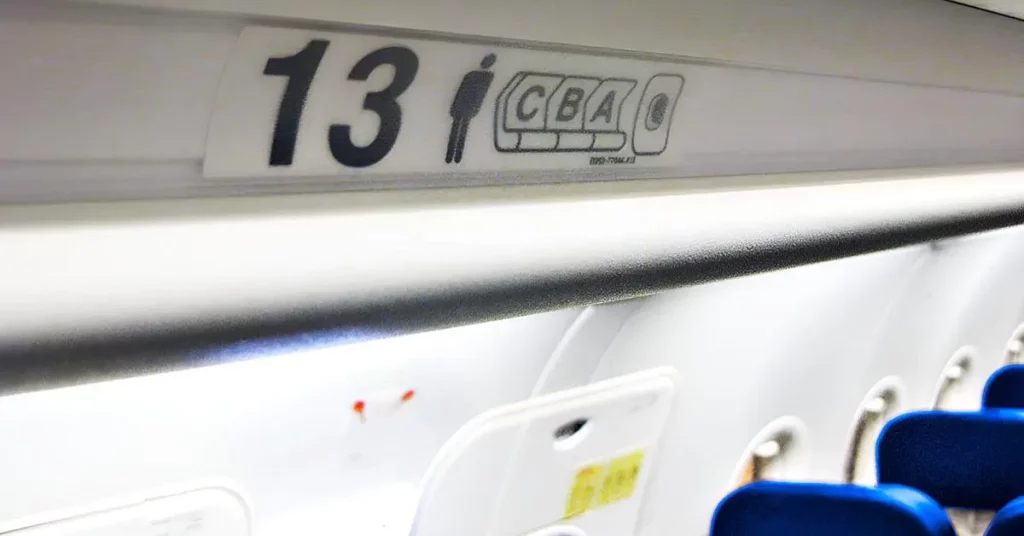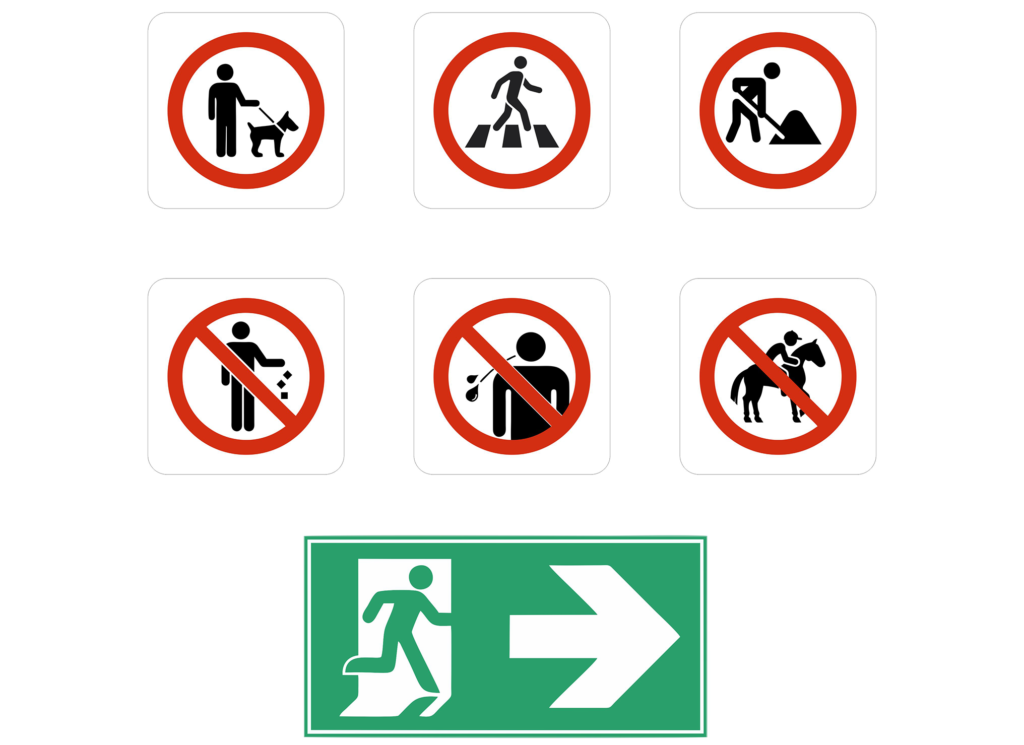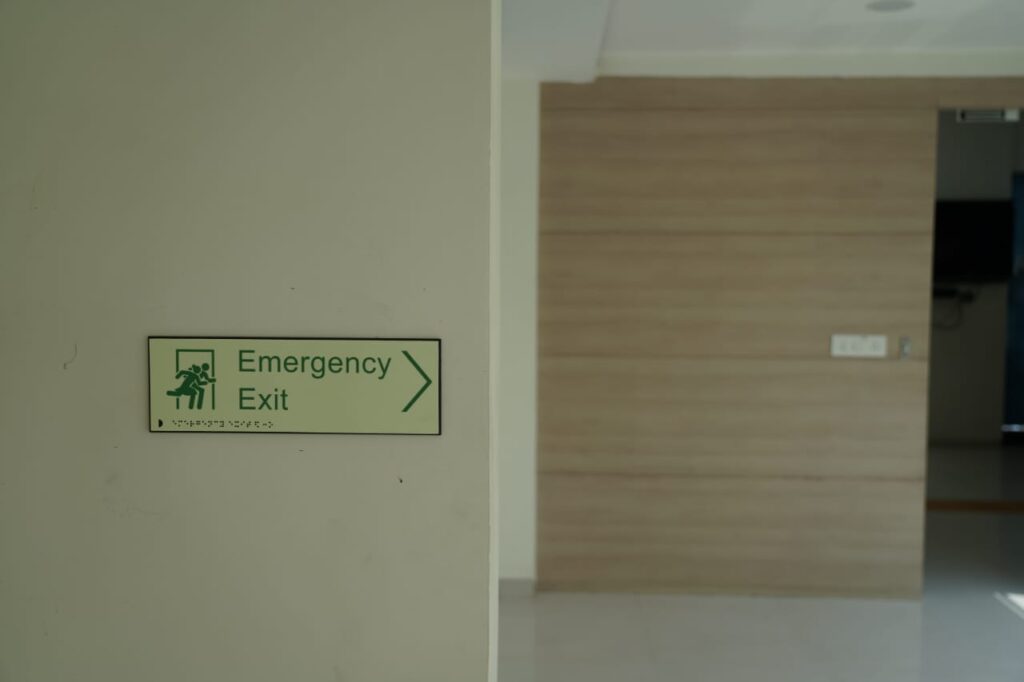Date Posted
14.12.2023
Author
Kapil Pandey
A few months ago, I was on a flight back to Delhi from Lucknow, and as I was settling on my seat, a young girl, approximately 7 years old, was standing in the aisle at the entrance to the row in front of me, looking upwards at the groove below the stowage where the row numbers are written. Her father was right behind her trying to comprehend exactly what had caught his daughter’s attention. And before he could ask her daughter to move into her row, the young girl announced, “Papa, ye meri seat nahin hai!”. The surprised father said, “beta ye aaphi ki seat hai. Let’s move in. We are blocking the way for other people”. The daughter repeated, “Papa, ye meri seat nahin hai. Vo dekho, vahaan male sign hai”.

The young girl was pointing to the sign that displays the alphabetical arrangement of the seats (See Image 1.1) confirming the window seat with a window icon and the aisle seat with a male icon. (One might argue that this icon is non-gendered and showcases a person and not a male. But then again, the same icon is used for male toilets across the world!). The father laughed it off and coaxed his daughter to walk in and take her seat, but my jaw had dropped on the aircraft floor! I consider myself quite imaginative, but to see that a tiny sign could have such a strong impression on a young mind was far beyond the reaches of my imagination. You see, I am a designer. Not just a designer, a male designer. Not just a male designer, a male signage designer! And a 7-year-old’s observation had just disturbed me to the point of feeling utterly useless. I spent the next couple of hours making a list of signage that we see in our rozmarra and concluded that except for the female toilet sign almost every sign that uses human iconography ignores the existence of the female human species (the third gender is not even part of the equation) – Signs that speak to pedestrians or the ones that tell us that pedestrians are crossing, signs that caution us about the ongoing construction work, the ones that caution us to not litter, direct us to fire exits, warn us to not spit and for that matter even the ones that prohibit us from horse riding on city roads (See Image 1.2) – each and every sign has a single, common assumption to make – that decisions are always made by men. In fact, even in today’s day and age I’ve seen construction signage stating, ‘men at work’ even if most of the construction workers on that site are women (at this point I’d urge you to look up the etymology of the word, Man*. The word is an appropriation by my kind of human species!

In fact, it just took me a just little more zooming out to be reminded of an article I had read four years back about NASA’s epic blunder of announcing and then cancelling the world’s first all-female spacewalk. A male astronaut replaced one female astronaut as NASA didn’t have a spacesuit in her size! It’ll take very little Googling to realise that women and their needs have received a blind eye in every work of creation since the beginning of time. We live in a world that is designed for Men and our approach to design which is rooted in patriarchy and therefore considers men as the only users, needs to be subjected to scrutiny. ‘Is our design methodology inclusive from every standpoint?’ is a question we have to constantly ask ourselves and we might still fall short of cleansing ourselves of our deep-rooted gender biases. I am happy to mention that we have started doing this at our design studio and we ensure that such streams of thoughts don’t just stay in our space but also flow into the spaces of our clients, our fellow design and architecture colleagues, and challenge them, too.
A recent outcome of one such exercise was the Fire Exit Sign that is an omnipresent sign as far as interior public, retail and commercial spaces go. We were designing and building signage for UNICEF’s Ahmedabad office (See Images 2.1 and 2.2) and felt this might be a good opportunity to redraw the well-known icon of a man running into a staircase. We hope that the Fire Exit is just the beginning of the fire we’ve started for ourselves and for the people we affect in our daily personal and professional lives. Do let us know what you think. In the meantime, we’ve promised ourselves that we’ll keep coming up with signs that have their basics right and force us to confront our deep-rooted biases.


*As per the Century Dictionary, the meaning of the word Man is, “a featherless plantigrade biped mammal of the genus Homo”, which means that originally the word Man used to mean “human being” or “person”, and was gender neutral. You could call anybody a man as long as they were human. Man is derived from Old English “mann”, or the earlier Proto-Indo-European word “mon” (or “man”). In Old English the word for Male-Human was “wer” or “wǣpmann”, but it disappeared around 13th century and the word “man” took over, although it still could be used in gender neutral sense and did so all the way to the twentieth century.
